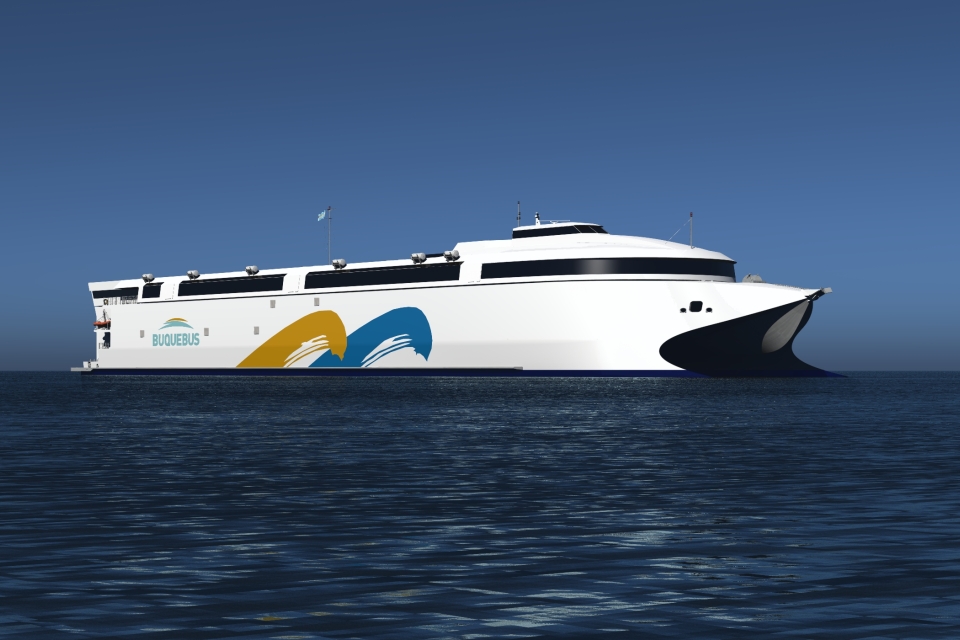Incat Tasmania is building the world’s first zero-emission Ro-Pax ferry for South American Buquebús. With an overall length of 130 metres, it will be the largest ever vessel of its type, while it is also the world’s first zero-emission, lightweight catamaran. Wärtsilä has been contracted to power the ship.
Wärtsilä will supply its battery electric propulsion system and waterjets, with the battery systems ordered from Corvus Energy. The vessel will be fully battery powered, with e-motor driven Wärtsilä waterjets as the main propulsors. With more than 40 MWh of energy storage, the battery modules and energy storage system package are four times larger than on any electric/hybrid ship currently operating.
‘The battery power pack that we are supplying will be the largest ever supplied with a unique eight waterjet propulsor configuration,’ says Roger Holm, President of Wärtsilä’s Marine Power business. ‘[This configuration] is the most efficient available on today’s market for this speed range and type application while boasting all the benefits from Wärtsilä’s axial flow waterjet technology – low weight, shallow draught, superb manoeuvrability, and low maintenance.’
The aluminum-constructed ferry will also be the first fully electric vessel in South America. It will operate between Argentina and Uruguay. It will carry 2100 passengers and 225 vehicles.
Also read: Corvus Energy to develop maritime fuel-cell systems with Toyota
Dolphin NextGen
This project is made possible by Corvus’ latest technological breakthrough– the lightweight battery, Dolphin NextGen. The design is based on the architecture of the four-year, multi-million development programme for the Corvus Blue Whale ESS.
The Blue Whale development included a ground-up redesign that reevaluated and improved every aspect of battery design, including battery chemistry, mechanical and electrical design, and software building blocks. The Dolphin NextGen ESS is a game changer for marine battery projects due to its low weight and volumetric density, robustness, and unsurpassed flexibility.
Wärtsilä scope
The full Wärtsilä scope of supply includes Wärtsilä’s own energy management system, the power conversion system, DC shore charging system, the 40 MWh battery modules, the DC hub, the eight electric motors, eight Wärtsilä axial flow WXJ1100 waterjets, and the ProTouch propulsion control system.
Delivery of the Wärtsilä equipment is scheduled for the latter part of 2024, and the vessel will be delivered in 2025.
Picture: The vessel is a new ferry being built by Incat Tasmania and will be the largest ever vessel of its type (by Incat Tasmania Pty Ltd).
Also read: Wärtsilä to convert Stena Line ferries to methanol








